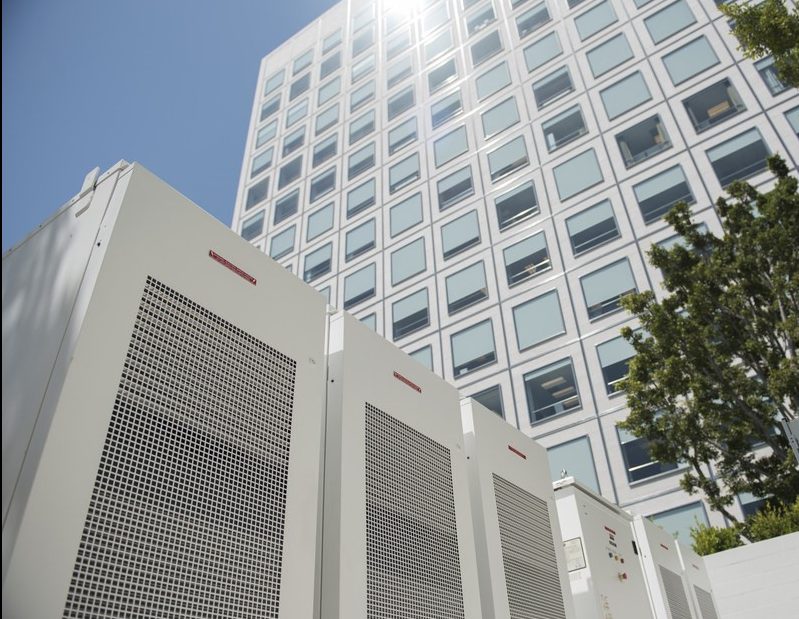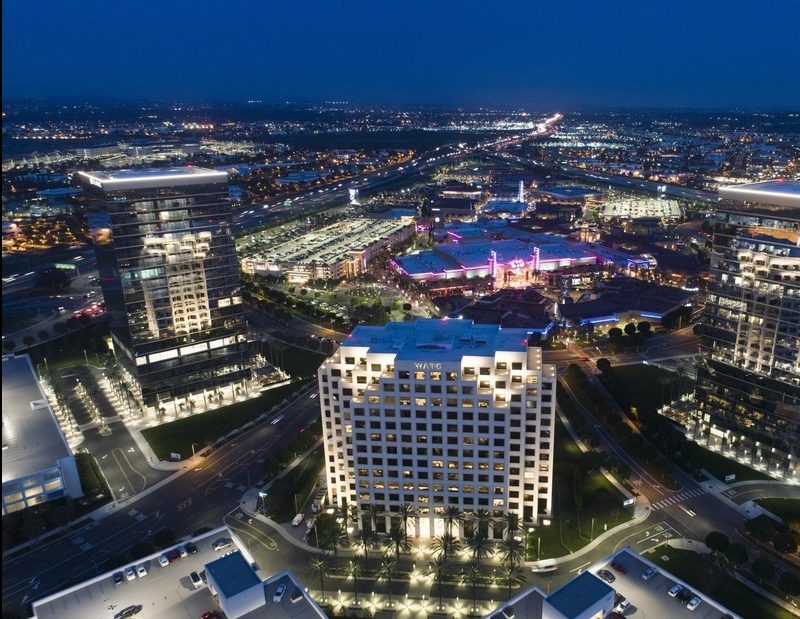California’s Record-Setting Virtual Power Plant
Launched last year via an Irvine Co. office portfolio, the initiative has saved utility customers $1 million to date.

Photo courtesy of The Irvine Co.
In its first year of operation, a record-setting virtual power plant in California has delivered more than 2 gigawatt-hours to the grid. The VPP is part of massive grid modernization undertaken by Southern California Edison, which provides power to 15 million people across a 50,000-square-mile swath of the state.
Designed and operated by AMS and owned by Macquarie Capital, the virtual power plant is tasked to reduce peak demand in the Los Angeles Basin by installing battery storage systems behind the meter at properties of SCE’s commercial customers. The project’s first phase (11 megawatts/60 megawatt-hours) went into operation last year.
Since then, the system has delivered more than 2 gigawatt-hours of capacity services to the California Independent System Operator (CAISO), demolishing records for distributed energy storage. In addition to providing grid services, the project also generated more than $1 million in savings to SCE customers.
Shifting Sources
The story began five years ago, when the SCE selected AMS to produce a VPP, said Manal Yamout, AMS’ senior vice president for external affairs. AMS forged working relationships with the Irvine Co. and Wal-Mart, as well as water agencies, hospitals and the California State University system. AMS transforms its customers’ buildings into hybrid electric buildings, using batteries that are plugged into the buildings themselves and connected to the grid.

The Irvine Co.’s commercial building network. Photo courtesy of The Irvine Co.
“In the evening, when there is plentiful energy at low cost, we fill up that battery. In the daytime when demand charges are high, we take a portion of the building’s electric load off the grid and onto the battery,” she said. The process is accomplished through an automated platform that Yamout compared to the software in a hybrid car that alternates between gas and electric power.
The first phase of the project includes a fleet of 21 state-of-the-art hybrid buildings owned by the Irvine Co. “We give Irvine Co. the software to monitor its energy bill savings, its energy usage, the wholesale market price and its emission profiles, and it can compare all their buildings to each other,” she said.
AMS also signs service contracts with Irvine Companies and others to guarantee bill savings over a 10-year period. The companies don’t pay for the battery system. Instead, AMS pays for, owns, operates and installs the system and guarantees the host customer specified savings. “We monetize part of the savings they achieve,” she said.
Working in harmony
In addition, AMS aggregates scores of buildings in a geographic area, all with their own batteries, and places software on top of the systems already in place. “We give the local utility the right to dispatch the entire set of buildings,” Yamout said. Edison sends out a signal remotely. When that signal is received, AMS can take multiple buildings off the grid and and switch them to separate batteries. The utility instantly registers a drop in demand, but the host customer feels no difference. “That’s what the virtual power plant is,” Yamout said. “We aggregate a number of buildings, and then work with the utility to dispatch those buildings in harmony to meet the needs of the electric grid.”
The host customers do not benefit directly from the VPP. Instead, they benefit from their own buildings’ batteries, and contribute to the efficiency of the overall electric grid. Host customers also gain a lower energy bill by using battery-stored energy, and the utility gains local capacity to serve the needs of the overall market.
The fact that AMS finances, builds, develops and operates the system “involves meeting the needs of the individual building owners and the utility at the same time,” Yamout said. “That’s where the magic of the software comes in.”







You must be logged in to post a comment.